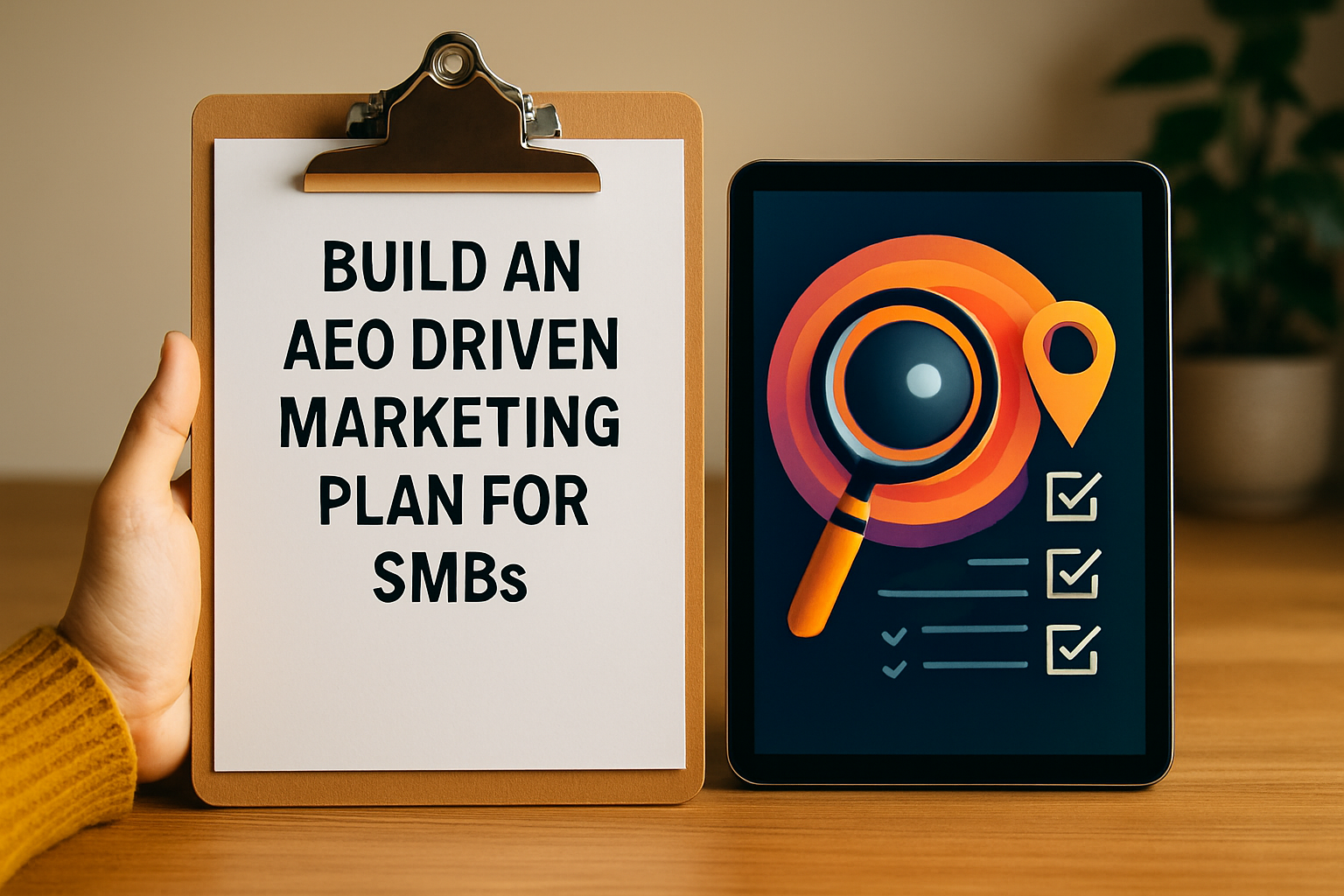7 Steps to a Successful Lead Nurturing Checklist

Every business wants more leads, but simply collecting names and emails rarely translates to real results. Surprisingly, businesses that study their target audience closely can see conversion rates soar by up to 300 percent. Most people think the secret is fancy software or nonstop follow-ups, but true lead nurturing starts long before that with genuine understanding of who your audience really is.
Table of Contents
- Understand Your Target Audience
- Create Compelling Lead Magnets
- Segment Your Leads For Personalization
- Develop A Consistent Communication Plan
- Automate Your Follow-Up Processes
- Monitor And Analyze Lead Engagement
- Optimize Your Strategy Based On Feedback
Quick Summary
| Takeaway | Explanation |
|---|---|
| Understand your audience deeply | Recognize specific characteristics, pain points, and motivations to improve marketing effectiveness. |
| Create high-value lead magnets | Offer strategic content that provides immediate value in exchange for contact details, enhancing conversion rates. |
| Segment leads for tailored communication | Use detailed criteria like behavior and attributes to personalize interactions and improve engagement. |
| Establish a consistent communication plan | Ensure timely, relevant messaging across channels to guide leads through the sales funnel effectively. |
| Develop feedback loops for strategy optimization | Collect and analyze diverse customer insights regularly to adapt marketing strategies to evolving needs. |
1: Understand Your Target Audience
Successful lead nurturing begins with deep audience comprehension. When developing your lead nurturing checklist, recognizing the specific characteristics, pain points, and motivations of your potential customers is crucial. Without this foundational understanding, your marketing efforts will lack precision and effectiveness.
Market research from the Small Business Administration reveals that businesses who invest time in understanding their target audience experience significantly higher conversion rates. This process involves more than basic demographic data gathering.
To truly understand your target audience, you need to develop comprehensive buyer personas that go beyond surface-level information. Consider these critical elements:
- Demographic details: Age, income, location, professional role
- Behavioral characteristics: Online browsing habits, purchasing patterns
- Psychological factors: Challenges, aspirations, decision-making triggers
The most effective lead nurturing strategies transform generic audience insights into personalized communication pathways. This means mapping out potential customer journeys and identifying specific touchpoints where your messaging can resonate most powerfully.
Practical audience understanding requires continuous learning. Implement systematic feedback mechanisms like surveys, direct interviews, and analytics tracking to refine your knowledge continuously. By treating audience understanding as an evolving process, you create adaptable lead nurturing approaches that remain relevant and compelling.
Remember, your goal is not just collecting data but developing genuine empathy and connection with potential leads. When you demonstrate that you comprehend their unique needs and challenges, you dramatically increase the likelihood of converting interested prospects into committed customers.
2: Create Compelling Lead Magnets
Lead magnets represent strategic content offerings designed to capture potential customer contact information. These valuable resources transform anonymous website visitors into trackable leads by providing immediate, tangible value in exchange for basic contact details.
Content Marketing Institute research demonstrates that high-quality lead magnets can increase conversion rates by up to 300%. Successful lead magnets address specific audience pain points through targeted, actionable solutions.
Effective lead magnets typically fall into several compelling formats:
- Comprehensive PDF guides solving specific business challenges
- Webinar recordings offering expert insights
- Exclusive email training series
- Calculators and assessment tools
- Templated resources
Design principles are critical when creating lead magnets. Your resource must provide immediate, tangible value that feels significantly more valuable than the minimal effort required to obtain it. This means crafting content that feels like a premium offering, not a generic marketing brochure.
The most powerful lead magnets solve a specific problem quickly and professionally. They showcase your expertise while providing genuine utility. A well-constructed lead magnet acts as a preview of the comprehensive solutions your business can deliver.
Consider the psychological triggers that motivate prospects to share their contact information. People are more likely to engage when they perceive:
- High-value content
- Expert credibility
- Immediate practical utility
- Low commitment requirement
Technical execution matters as much as content quality. Ensure smooth delivery mechanisms, mobile responsiveness, and professional design that reflects your brand’s standards. A clunky download process can instantly undermine even the most compelling lead magnet.
Continuously test and refine your lead magnets. Track download rates, engagement metrics, and subsequent conversion performance to iterate and improve your approach.
3: Segment Your Leads for Personalization
Lead segmentation transforms generic marketing approaches into precision-targeted communication strategies. By dividing your potential customer base into distinct groups, you create opportunities for highly personalized interactions that dramatically improve conversion potential.
Marketing experts at Marketing Profs emphasize that sophisticated segmentation goes far beyond basic demographic categorization. Modern segmentation involves understanding nuanced behavioral patterns, engagement levels, and specific customer journey stages.
Effective lead segmentation requires a multidimensional approach. Consider these critical segmentation dimensions:
- Behavioral characteristics: Purchase history, website interactions
- Engagement levels: Email open rates, content consumption
- Professional attributes: Industry, job role, company size
- Geographic considerations: Location, regional business contexts
- Psychological motivators: Pain points, aspirational goals
Data collection becomes paramount in developing meaningful segments. Implement robust tracking mechanisms that capture subtle indicators of lead preferences and potential. Advanced customer relationship management (CRM) systems can automate much of this nuanced data gathering.
The primary goal of segmentation is relevance. When leads receive communications precisely tailored to their specific needs and interests, they feel understood rather than marketed to. This psychological connection transforms cold leads into engaged prospects.
Segmentation strategies should remain dynamic and adaptable. Regularly review and refine your segmentation models based on evolving data insights. What works today might require adjustment tomorrow as market conditions and customer behaviors shift.
Integrate progressive profiling techniques to continuously enrich your understanding of each segment. Each interaction becomes an opportunity to gather more detailed information, allowing you to create increasingly sophisticated and personalized communication pathways.
Remember, effective segmentation is not about creating more categories, but about developing deeper, more meaningful connections with potential customers.
4: Develop a Consistent Communication Plan
Communication consistency forms the backbone of successful lead nurturing strategies. A well-structured plan ensures that potential customers receive timely, relevant, and engaging content that moves them progressively through the sales funnel.
Virginia Tech’s Extension Service emphasizes the critical role of strategic communication in building meaningful relationships with potential clients. A consistent communication plan transforms random interactions into purposeful engagement.
Designing an effective communication strategy requires careful planning across multiple dimensions:
- Content frequency: Determine optimal touchpoint intervals
- Channel diversity: Mix email, social media, and direct outreach
- Message progression: Create narratives that evolve with lead maturity
- Personalization levels: Adjust communication depth based on segment
Timing and cadence are fundamental to maintaining lead interest. Your communication plan should strike a delicate balance between staying top of mind and avoiding audience fatigue. This means crafting a rhythm that feels natural and valuable, not intrusive.
Key considerations for developing your communication strategy include:
- Automated yet personalized workflows
- Clear value proposition in each interaction
- Measurable engagement metrics
- Flexible response mechanisms
Technology plays a crucial role in executing a sophisticated communication plan. Implement marketing automation tools that enable sophisticated segmentation, personalized content delivery, and real-time performance tracking. These systems allow you to create dynamic communication pathways that adapt to individual lead behaviors.
Successful communication plans treat each interaction as an opportunity to demonstrate expertise, build trust, and guide potential customers closer to a purchasing decision. Every email, message, or content piece should provide tangible value that addresses specific audience needs and pain points.
Constantly analyze and refine your communication strategy. Track key performance indicators such as open rates, click-through rates, and conversion metrics. Use these insights to continuously optimize your approach, ensuring that your lead nurturing efforts remain responsive and effective.
5: Automate Your Follow-Up Processes
Automation transforms lead nurturing from manual, inconsistent interactions into a streamlined, intelligent process. By implementing strategic follow-up systems, businesses can ensure no potential customer falls through the communication gaps.
Research from ResearchGate highlights the significant performance improvements achieved through systematic email automation, demonstrating its critical role in modern marketing strategies.
Effective automation requires careful design of trigger-based communication workflows. These intelligent systems respond to specific lead actions, creating personalized engagement pathways that feel natural and responsive.
Key automation strategies include:
- Immediate welcome sequences for new leads
- Behavior-triggered email campaigns
- Segmented re-engagement workflows
- Timely reminder and follow-up messages
Technological infrastructure plays a crucial role in successful automation. Choose platforms that offer:
- Robust integration capabilities
- Advanced segmentation features
- Comprehensive analytics tracking
- Flexible workflow customization
The most powerful automated systems go beyond simple scheduled messages. They incorporate intelligent decision trees that adapt communication based on individual lead interactions, preferences, and engagement levels.
Psychological principles are fundamental to effective automation. Your automated sequences should feel personal, not mechanical. This means crafting messages that anticipate lead needs, address potential concerns, and provide genuine value at each interaction point.
Constant refinement separates exceptional automation from mediocre implementations. Regularly analyze your automated workflows, tracking metrics like open rates, click-through rates, and conversion performance. Use these insights to continuously optimize your communication strategies.
Remember that automation is not about replacing human connection but enhancing and scaling meaningful interactions. The goal is to create a system that feels responsive, intelligent, and genuinely helpful to potential customers.
6: Monitor and Analyze Lead Engagement
Lead engagement analysis transforms raw data into strategic insights, enabling businesses to understand and optimize their customer acquisition processes. By systematically tracking interactions, organizations can create more responsive and effective marketing strategies.
Harvard Business Review research indicates that companies utilizing comprehensive engagement tracking experience up to 35% higher conversion rates compared to those relying on traditional monitoring methods.
Effective engagement monitoring requires a holistic approach that captures multiple interaction dimensions. This means looking beyond surface-level metrics to understand the deeper patterns of lead behavior and interest.
Key metrics to track include:
- Email interaction rates
- Website visit frequency
- Content download volumes
- Webinar attendance
- Social media engagement
Advanced engagement tracking provides predictive intelligence about potential customer journeys. By understanding how leads interact with your content and communication channels, you can anticipate their needs and proactively address potential barriers to conversion.
Consider these critical analysis strategies:
- Develop comprehensive lead scoring models
- Implement multi-touch attribution tracking
- Create detailed engagement heat maps
- Establish baseline performance benchmarks
Technology plays a crucial role in sophisticated engagement monitoring. Invest in analytics platforms that offer real-time tracking, advanced segmentation, and predictive modeling capabilities. These tools transform raw interaction data into actionable strategic insights.
The most successful engagement analysis goes beyond numerical metrics. Look for qualitative indicators that reveal deeper motivations and potential friction points in the customer journey. Understanding the emotional context of lead interactions can provide more nuanced insights than pure quantitative data.
Continuous improvement is the cornerstone of effective engagement monitoring. Regularly review your tracking methodologies, update your analysis frameworks, and remain adaptable to emerging communication technologies and lead behavior patterns.
Remember, the ultimate goal of engagement analysis is not just collecting data, but transforming insights into more meaningful, personalized customer experiences.
7: Optimize Your Strategy Based on Feedback
Strategic optimization represents the critical final stage of lead nurturing, transforming accumulated insights into continuous improvement. Effective feedback integration allows businesses to create dynamic, responsive marketing approaches that evolve with changing customer needs.
MIT Sloan Management Review highlights that organizations implementing systematic feedback loops experience up to 50% faster innovation cycles and significantly improved customer satisfaction rates.
Feedback optimization requires a comprehensive and multifaceted approach that goes beyond simple data collection. The most successful strategies create holistic frameworks for understanding and acting on customer insights.
Key feedback collection mechanisms include:
- Direct customer surveys
- Analytics-driven behavioral tracking
- Exit interviews for lost opportunities
- Social media sentiment analysis
- Customer support interaction reviews
Successful optimization strategies demand transparent, actionable processes. This means establishing clear protocols for:
- Collecting diverse feedback sources
- Analyzing complex interaction patterns
- Prioritizing strategic modifications
- Implementing measured changes
- Tracking subsequent performance shifts
Psychological principles play a significant role in effective feedback integration. Recognize that customers provide insights not just through explicit statements, but through subtle behavioral signals and interaction patterns.
Technology serves as a critical enabler in modern feedback optimization. Invest in advanced analytics platforms that can transform raw data into meaningful, actionable strategic recommendations. These tools help identify nuanced trends that might escape traditional analysis methods.
The most sophisticated optimization approaches treat feedback as a continuous dialogue, not a one-time assessment. Create mechanisms that allow ongoing communication, demonstrating to leads and customers that their input genuinely influences your business strategies.
Remember that optimization is an iterative process. No single feedback cycle provides a permanent solution. Maintain flexibility, curiosity, and a commitment to continuous learning. Your lead nurturing strategy should remain as dynamic and adaptable as the marketplace itself.
The table below provides a comprehensive overview of the seven essential steps to successful lead nurturing, summarizing each major phase, its key actions, and the main benefits for businesses.
| Step | Key Actions | Main Benefit |
|---|---|---|
| Understand Your Target Audience | Develop detailed buyer personas; gather demographic, behavioral, and psychological insights | Enables targeted, relevant communication that increases conversions |
| Create Compelling Lead Magnets | Offer high-value content (guides, webinars, tools); ensure professional delivery | Captures leads and boosts conversion rates through valuable offers |
| Segment Leads for Personalization | Categorize by behavior, attributes, engagement; update segments with progressive profiling | Delivers personalized messages that deepen engagement |
| Develop a Consistent Communication Plan | Define messaging frequency, channels, and narrative flow; automate workflows | Maintains lead interest and trust, guiding them through the funnel |
| Automate Follow-Up Processes | Implement trigger-based emails and workflows; use intelligent decision trees | Ensures timely and scalable interactions with potential customers |
| Monitor and Analyze Lead Engagement | Track open rates, downloads, web visits, social activity; use analytics for insights | Optimizes strategies by identifying opportunities and friction points |
| Optimize Strategy Based on Feedback | Collect feedback via surveys, analytics, and sentiment review; make iterative improvements | Increases marketing effectiveness and strengthens customer loyalty |
Ready to Transform Your Lead Nurturing Strategy Into Results?
Are you feeling overwhelmed managing all seven steps of lead nurturing on your own? Tasks like creating compelling lead magnets, segmenting your list, automating follow-ups, and analyzing engagement often demand more time and resources than most small businesses can spare. Without the right tools, you risk missed opportunities and inconsistent communication that hold your business back from higher conversions and faster growth.

Imagine having every stage of lead nurturing from personalized outreach to real-time feedback analysis fully automated in one place. Authority Echo empowers you to build high-converting lead nurture sequences that are easy to manage and proven to drive measurable results like more conversions, response speed, and client retention. If you are ready to unify your lead nurturing process and watch your pipeline fill up, visit Authority Echo and book your demo today. Make today the turning point for your business growth. Act now to unlock the growth potential that comes from a truly optimized and automated lead nurturing checklist.
Frequently Asked Questions
What is lead nurturing, and why is it important?
Lead nurturing is the process of developing and maintaining relationships with potential customers throughout their buying journey. It is important because it helps convert leads into paying customers by providing relevant information and support at each stage of the sales funnel.
How can buyer personas improve my lead nurturing strategy?
Buyer personas help tailor your lead nurturing efforts to specific audience segments by providing insight into their characteristics, pain points, and motivations. This can lead to more personalized communication, increasing engagement and conversion rates.
What types of lead magnets are most effective?
Effective lead magnets include comprehensive PDF guides, webinar recordings, exclusive email training series, calculators, and templated resources. They should provide immediate, tangible value that addresses specific pain points of your target audience.
How can I measure the effectiveness of my lead nurturing strategy?
You can measure the effectiveness of your lead nurturing strategy by tracking key performance indicators such as email open rates, click-through rates, conversion rates, and engagement metrics. Analyzing this data helps you refine your approach and improve results.




